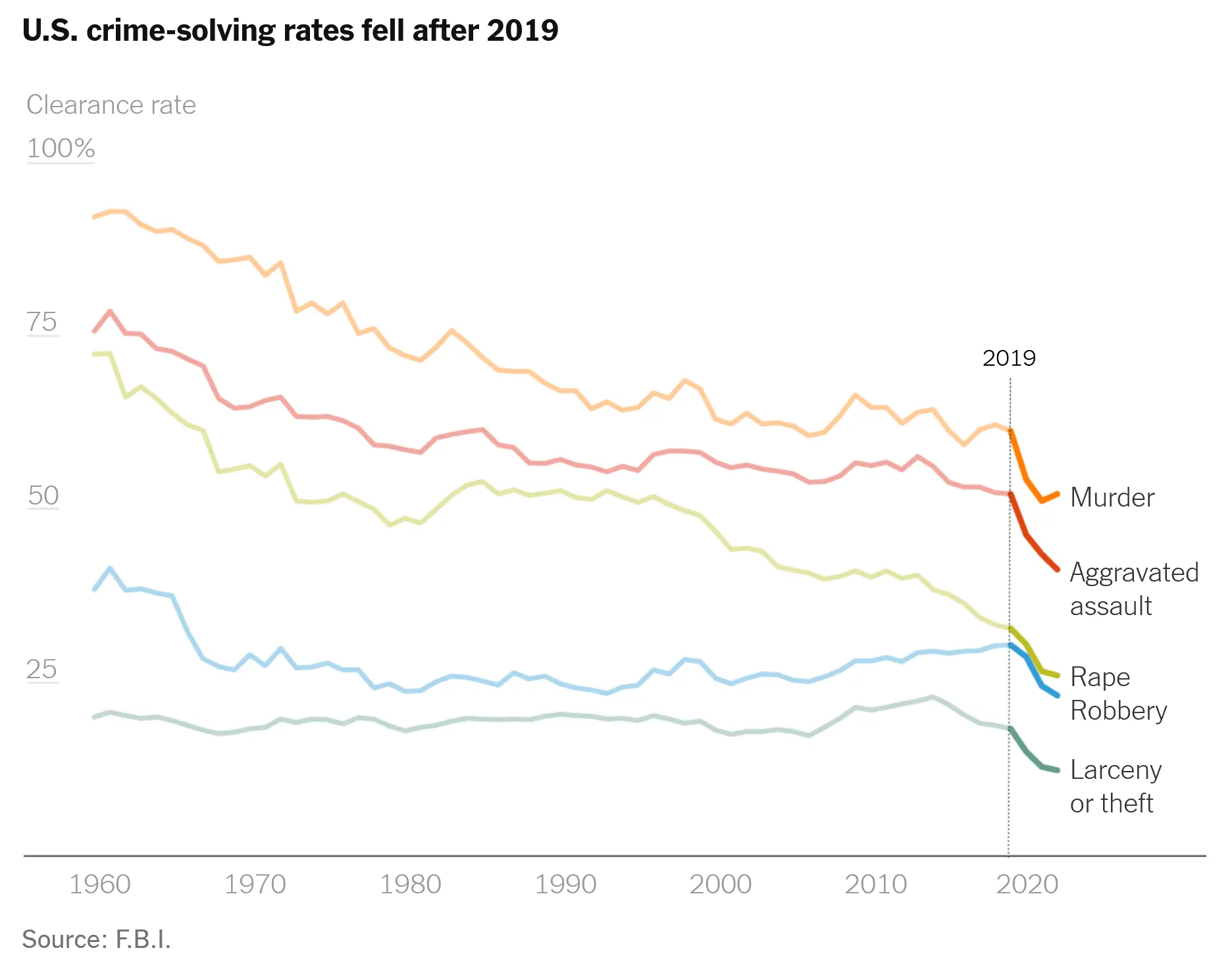- cross-posted to:
- nyt_gift_articles@sopuli.xyz



While headlines tend to focus on falling clearance rates in large liberal cities, the decline occurred nationwide in both red and blue cities, counties and states. The violent crime clearance rate, for example, fell considerably between 2019 to 2022 in big cities, which tend to be led by Democrats, as well as in small cities and suburban and rural counties, which tend to be led by Republicans.

This is the best summary I could come up with:
The exact causes of the decline in arrests are difficult to pinpoint, but the timing is clearly tied to the summer of 2020, suggesting that changes in policing and America’s dwindling confidence in law enforcement since the killing of George Floyd played a role.
Low morale and extreme stresses in the departments have led to high levels of resignations among older and more experienced officers and significantly fewer recruits to replace them.
It also means significantly longer response times, leaving clues to grow stale and witnesses to disappear before officers arrive.
For a long time, conventional wisdom pointed to factors beyond the control of law enforcement — such as whether a witness was present or whether physical evidence was left behind — as the primary drivers of solving crimes.
But newer research from a criminologist, Anthony A. Braga, presents a clear connection between the amount of investigative resources dedicated to a crime and the likelihood of its being solved.
Civilians can respond to low-level incidents that don’t require an officer, take reports over the phone and aid investigators in solving cases.
The original article contains 1,069 words, the summary contains 181 words. Saved 83%. I’m a bot and I’m open source!